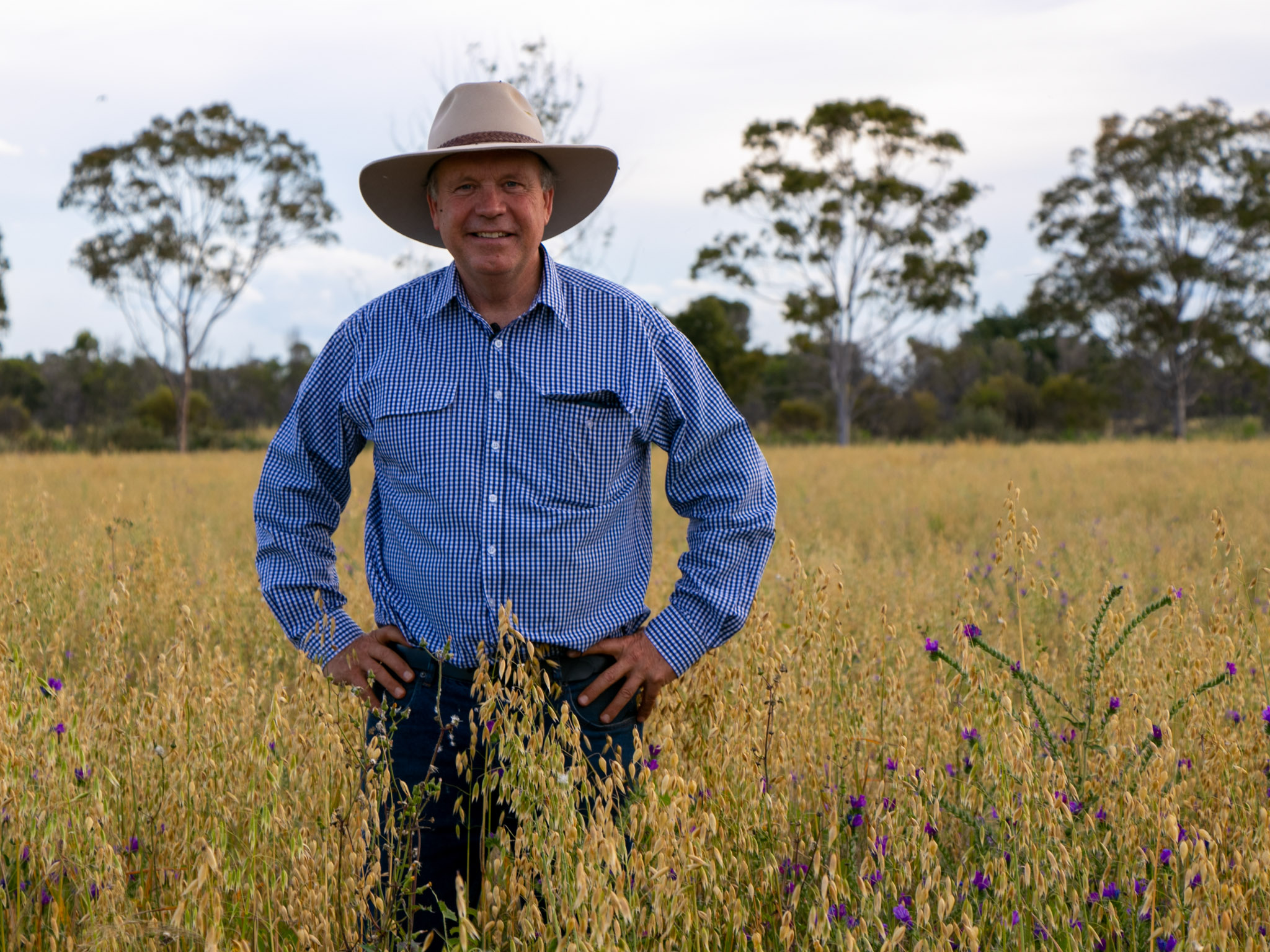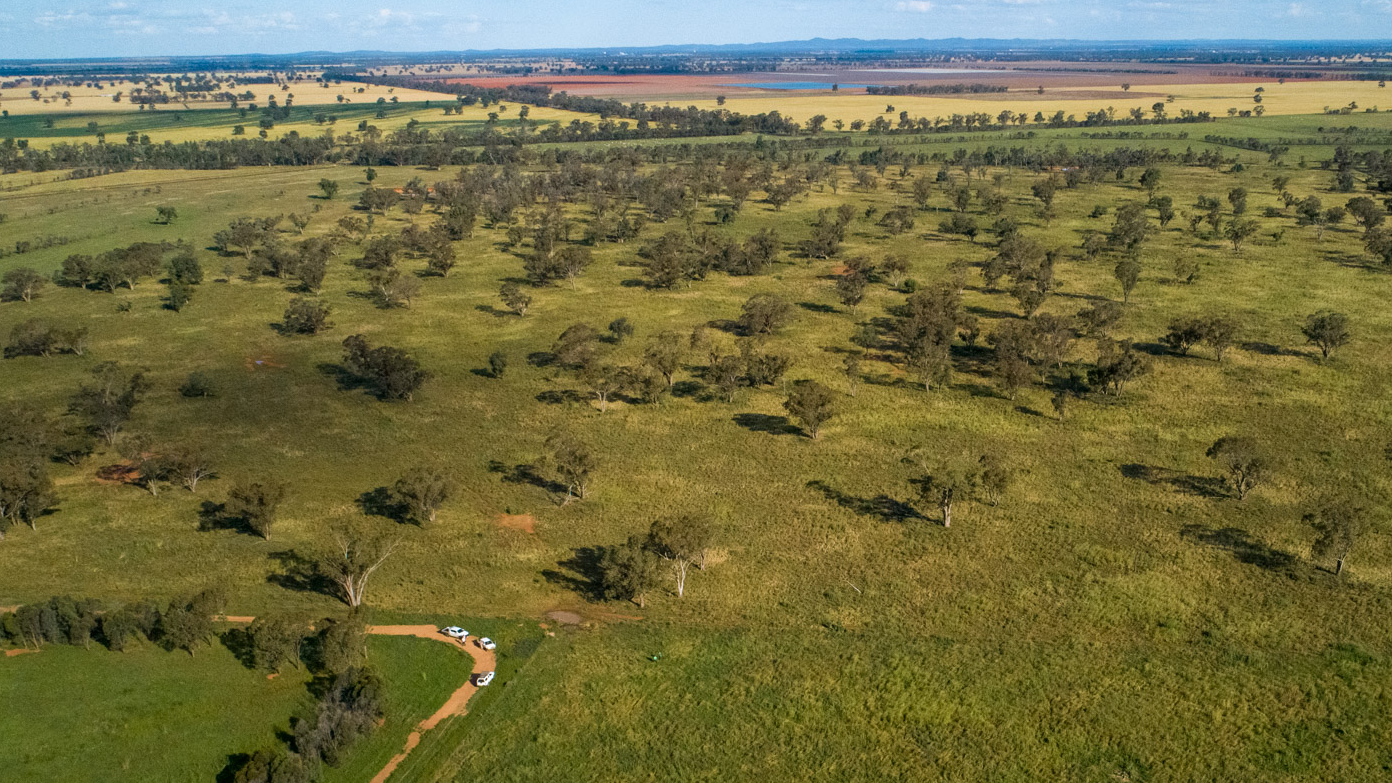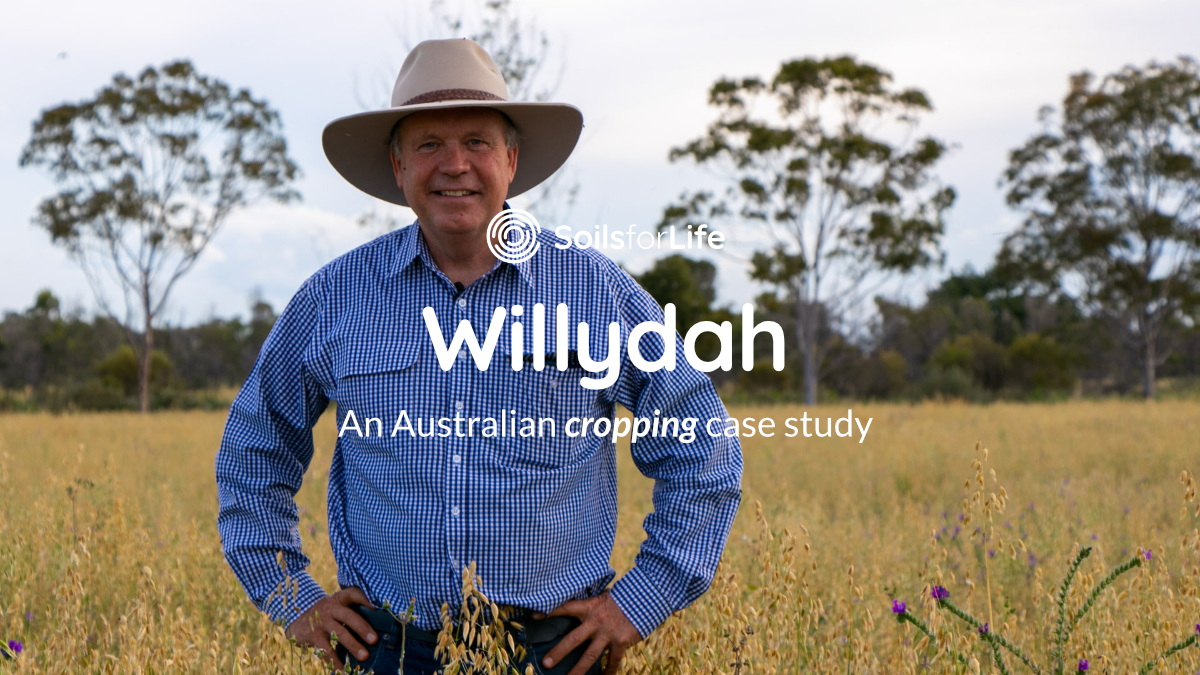No-Kill Cropping, restoring grasslands
No-Kill cropping | June 2023
Bruce grew up farming with his parents on land that had been in his family for four generations. With an appreciation of diversity, much curiosity, and a bit of luck, Bruce developed a new practice, now called No-Kill Cropping, and changed the trajectory of his family farm.

Bruce Maynard at Willydah
How did No-Kill Cropping Come to Be?
The impetus for No-Kill Cropping began in the early 90s, when Bruce started time-controlled grazing. This approach improved his grassland diversity and production so much that he did not want to take his grasslands ‘back to zero’ via cropping.
So, Bruce sold his existing cropping machinery and created a machine for planting directly into grasslands.
He trialled it during the dry 1996 summer and after the autumn rains, it became ‘abundantly clear’ that sowing dry meant cereals can compete with other plants, and thus greatly improve feed on offer for his animals. Nearly 30 years on, Bruce and his son Liam continue to ‘No-Kill’ crop, and Bruce has distilled this ‘easy set of practices’ into five principles.
Read on, and watch this video to learn more about these principles.
The five principles of No-Kill Cropping
Principle 1: Sow when the topsoil is dry.
Contrary to common practice ‘for the last 10,000 years’, the first principle is to sow into dry topsoil. Bruce describes this principle as a ‘10 metre start on the hundred metre sprint’:
With No-Kill Cropping, as soon as we get rain, the seed sprints out of the soil. Whereas, if you wet sow, you’ll always have to do something about plant competitors because while you are waiting to sow, the competitors are germinating and growing, growing, growing.
Conversely, with No-Kill Cropping, Bruce typically finds three or four cm of growth in cereals several days after rainfall events, while ‘the competitors are just starting’. To enable this ‘sprint’, Bruce creates a ‘one cm-deep by a half cm-wide disturbance’ in which to drop the seed as ‘the perfect seed-soil contact’.
In addition to germination rates, Bruce observes that sowing when soil is dry and has maximum strength minimises soil compaction. Alternatively, ‘wet sowing goes over the soil when it is most vulnerable, just like road builders moistening soils before compacting them’.
Bruce also observed how sowing with minimal disturbance changed the plants in his paddocks. When tilling, he would see a range of annual colonising plants return, whereas with little disturbance, ‘uneconomical plants reverted to mostly background, if at all’. Bruce says a return to tilling would mean an increase in germination of uneconomic weed species.
Principle 2: Place seed in soil using straight-running disc machinery.
Principle 2 describes how to sow for both soil and economic benefits. For example, straight coulter discs minimise disturbance of above ground plant and below-ground microbial communities, as well as limit soil carbon loss. Existing plants, especially perennials are not killed by the impact of the coulter discs travelling over them. In addition, dry-sowing with straight-running discs means a major decrease in resistance, fuel, and costs.
Principles 3 and 4: Don’t apply chemical pesticides or fertilisers.
Bruce considers almost every plant valuable for building grassland and soil health. To keep landscapes diverse and complex, he does not use chemicals or pesticides (including sourcing seeds without pesticide treatment). In addition, Bruce wants to ensure native species can compete with annuals, so he avoids fertilisers. By cutting these inputs, Bruce sees lower costs and reduced economic risk.
Principle 5: Effective grazing to return nutrients for plant growth.
Bruce describes many benefits of integrating effective grazing and No-Kill Cropping. Not only do grazing animals cycle nutrients and add microbial diversity to the soil, but by having access to cereals in grasslands, Bruce’s cattle eat novel and diverse foods by choice. For example, after eating oat crops that are a ‘high energy and low toxin’ food, he finds cattle will eat ‘higher toxin, low energy plants’, such as Patterson’s curse. Bruce observed that these increases in novel foods, along with the decrease in stress, increased the cattle’s health, and that increasingly, some customers are willing to pay a price premium for the taste, nutrition and ethics of animals raised in a low stress environment.
For Bruce, effective grazing management requires calm animals. Building on the work of Temple Grandin’s positioning (which Bruce describes as ‘Level 1’) and Bud Williams’ low stress handling (‘Level 2’), Bruce used livestock behavioural science to develop and codify a method of ‘Stress-Free Stockmanship’ in the year 2000 as a ‘Level 3’ behaviour management technique. His goal was to help animals learn positive behaviour in order to benefit the landscape.
Then, after seven years of behavioural science collaboration, Bruce and Dean Revell co-pioneered Self-Herding (‘Level 4 behaviour management’). Instead of setting up expensive permanent fences and infrastructure, Self-Herding uses signals – such as sights, sounds and smells – to move animals across the landscape. Bruce uses Self-herding to move and position animals in ways that are directly responsive to their needs, and the needs of the land, thus improving the quality of the crops, animals and landscapes.
Increasing financial options while decreasing risks
Bruce believes an integrated cropping and grazing system provides him with more options, time and resources, while decreasing his stress and risk. By sowing crops in a grassland, Bruce widens his grazing options throughout the year. Instead of harvesting and feeding cereals to animals in tray-feeders, it’s ‘financially and logistically attractive’ for the cattle to ‘harvest the high-quality feed in the field’ at the time when it best suits the animals and Bruce financially. Essentially, Bruce increases the size of the ‘haystack’ and uses ‘the four-footed harvesters rather than the rubber-tyre ones.’
No-Kill Cropping focusses on gross margin rather than gross yield. Whereas the costs of sprays and treatments would send Bruce on a ‘narrower and narrower set of train tracks’ towards maximising grain yield, Bruce can ‘sacrifice the crop even if it was looking good, as it went in at $10 an acre.’
In other words, because Bruce put the grain in so cheaply, he can maximise his gross margin by either direct harvesting by machinery or by transforming most of the grain where it sits through the animals and finding profit in the livestock products.
That said, Bruce doesn’t always graze the crops during the growth cycle in his area but that is a very viable option where growth seasons are long enough. There are several considerations of whether to harvest or graze, such as the life cycle of the stock and the vegetation, the value of the commodities and meat markets, weather events, volume of the cropping growth, and personal preference of the farmer. More recently, Bruce and his son Liam are exploring new markets for their ‘No-Kill’ crops, including with millers, brewers and bakers. Their approach to cropping provides options to choose from and reduces stress on their animals, farm, landscape and themselves.

An aerial view of Willydah, NSW showing revegetation across large tracts of land on the property.





